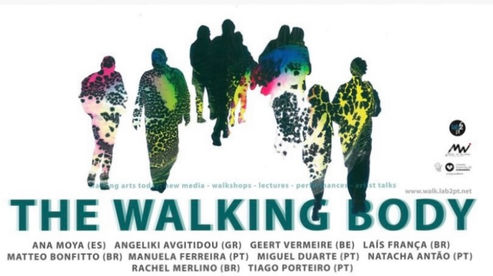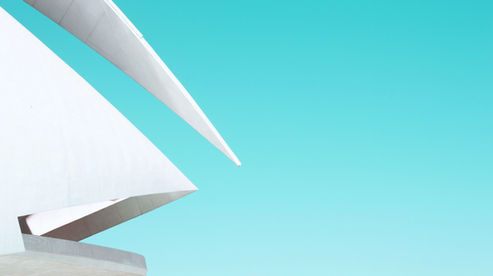top of page

Displace Us
A Performative Action Between Dramaturgy and Program
Displace Us is an artistic action conceived by three artists – Manuela Ferreira, Matteo Bonfitto and Tiago Porteiro – which uses walking as a performative device. The device arrived at, in lune with the assumptions associated with performativity, intends to place participants not simply in the position of spectators or observers, but involved in the dynamics of the proposed experiences. This is how the notion of experience, like that of alterity, assumes a central role in this proposal. In Displace Us we wanted to go beyond a mere sensory crossing of bodies, both through spaces and through urban and non-urban contexts of the historic center of the city of Guimarães (Portugal). This is how other dimensions of participation were associated with the journey. In the end, we arrived at an immersive path that invited us to cross different realities (private internal spaces vs. public spaces) and that promoted concrete practices of otherness. Namely, such practices are detained through the direct encounters that took place along the route between the participants and the hosts (linked to the spaces and realities traversed). The establishment of experiences was promoted, in part, through these interactions.
Nine spaces/realities were stopping points along a route that also involved paths that connected them: the making room of the Fashion Course at the University of Minho (Guimarães - Campus de Azurém); a sculpture located near the university restaurant on the same campus (work by the artist José de Guimarães); one of the sides of the Castle of Guimarães; The Center for Human Solidarity Prof. Emídio Guerreiro and Museum of the Convent of Santo António dos Capuchos (Claustros - Santa Casa da Misericórdia); the restaurant Cor Tangerina; Nossa Senhora do Carmo Church; Raúl Brandão Municipal Library; Main Hall of the City Council; Manuela Ferreira and Tiago Porteiro's house and finally, the entrance to Teatro Jordão, where the Visual Arts and Theater courses at the University of Minho are currently located.
The methodology of the creation process was collaborative, since the artists selected and designed the actions in the spaces/realities in dialogue with the linked hosts. The relationship between performativity , experience and alterity in Displace Us permeated, as a whole, not only the process but also the interactions of the participants in the course of the actions. Right at the beginning of the trip, in the fashion design room, participants were invited to choose one of the “kimonos” and/or gowns available to wear throughout the walk. When wearing these “second skins”, the “I” itself was displaced to the place of an “other”, that is, an alterity was created, in the first instance, from a dialogue that was established from oneself to oneself. It was not proposed that this action lead to any character creation, but to understand how each participant's body-image would be transported to new modes of subjectivation. The conditions for the participants to move around were also accentuated through the return image that random passers-by projected together with the walking group, made up of about thirty people.
Among the inspirations that contributed to the conception of this artistic action, it is worth highlighting the philosopher Hanna Arendt and her book called “The Human Condition”. Such work by Arendt contributed, in this case, to the construction of the trajectory carried out in Displace Us, insofar as the three human activities elaborated by her – labor, work and action – functioned as guiding , either from the choices of accessed realities, or from the experiences lived in such realities. The notion of labor permeated the intimate, sensory and perceptive dimensions activated in the Santa Casa facilities, in the Cor Tangerina restaurant, in the Church and inside the house used. The work dimension, which permeated the social dimension, was activated in the relationship with the sculpture, as well as, next to the castle and in the library. And finally, the notion of action, which permeated the more explicitly political dimension (from an institutional point of view), materialized in the meeting with the councilor responsible for the culture area of the City Council of Guimarães, where the participants had the opportunity to question. Another dimension present in our construction exercise of this path involved the relationship between 'dramaturgy' and 'performative program'. This relationship materialized through the relational dynamics created during the journey. If, on the one hand (also based on the evocations made to Arendt's work), one can recognize a narrative path and the construction of meanings, and therefore dramaturgical, on the other hand, each experience provided by immersion in the nine realities entered involved processes of perceptive and cognitive de-programming, which is one of the aspects that most characterizes the uniqueness of performative programs. It should also be noted that the establishment of the dramaturgical dimension is not linked to a causal logic of linear storytelling, but, together with the evocation of the layers elaborated by Arendt on the human, it was established from paradoxical and contrasting situations, activating , in turn, of associative logics (interior spaces Vs exterior spaces; moments of individual contemplation Vs moments of interaction; silence Vs noise; sensory activation Vs more reflective activity). Therefore, the dramaturgical dimension exerted in Des-lo-car-mo-nos / Displace Us a function of preparation for the performative programs, programs that generate experiential immersions that occurred in each of the accessed realities.
Keeping alive the spiral that never ends between experience and elaboration, after performing Des-lo-car-mo-nos / Displace Us, we realized that the aspects mentioned above were already latently present in the questions asked between us, which marked the beginning of this creative process. Among them: how, through an artistic action that uses the performative walk as a device, to establish mobilizing experiences from the verticalization of concrete practices of otherness? How to enable subjective expansions through the game between constructions of senses and narratives and sensory, perceptive and cognitive deconstructions?
It can be said that all those involved in this action (creators, participants, hosts and passers-by) were displaced, at different levels, by this action. We, Manuela, Matteo and Tiago, also moved by entering and expanding relational dynamics with the host people that opened up the different worlds accessed in this process. We also move when perceiving artistic actions as an act in the public space, as an act in the world. In its affective geography, Guimarães today is different, just like us. Finally, many were the invisible bridges built in Displace Us, bridges made of deconstructions and perceptive expansions associated with otherness practices. By creating links between contrasting worlds and realities, between subjective and collective and between dramaturgy and program, what moved us was the search for recognition of the complexity of the human, recognition that is so threatened today. Also in this context, artistic actions can play a central and irreplaceable role.
So let's displace ourselves!
Displace Us
Guimarães, PT
Creators: Manuela Ferreira, Matteo Bonfitto e Tiago Porteiro
bottom of page















